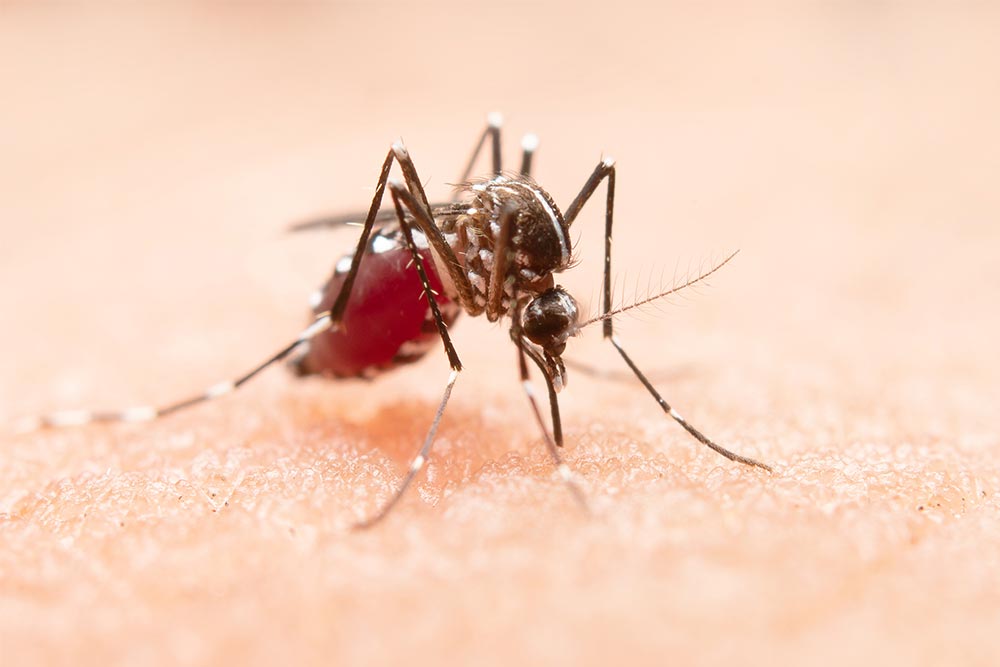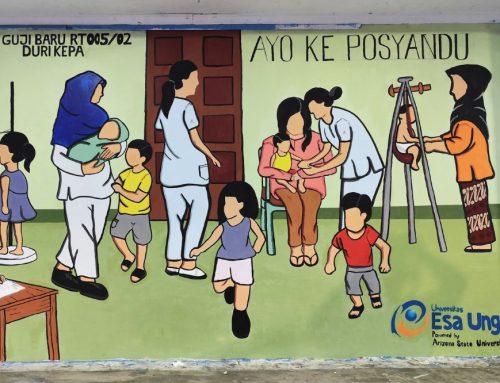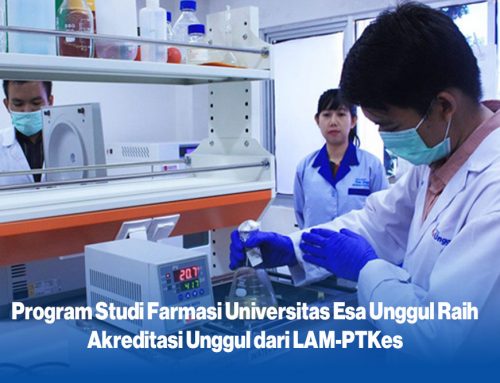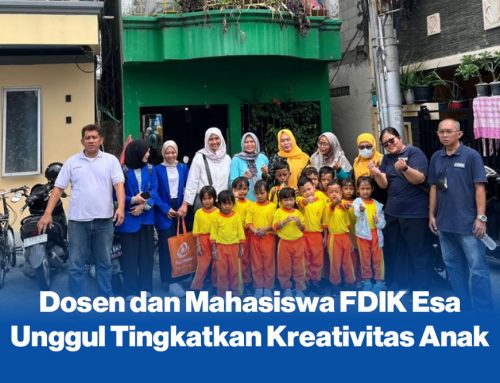Esaunggul.ac.id, In recent days, there has been a lot of information about the pros and cons of using the Wolbachia mosquito technology innovation in Indonesia. What and why is the development of Wolbachia mosquito technology?
The following is the result of a conversation with Prof. Maksum Radji, an expert in Microbiology and Biotechnology from the Pharmacy Study Program of FIKES Esa Unggul University, Jakarta.
Starting the conversation, Prof. Maksum said that Dengue Fever (DHF) is still a serious health problem in the world, including in Indonesia. In 2023, until early November, more than 4.5 million cases of DHF and more than 4,000 deaths from dengue fever have been reported in 80 countries around the world.
Meanwhile, in Indonesia, according to data from the Indonesian Ministry of Health (Kemenkes), there were 68,996 dengue cases until October 2023, with 498 deaths.
So what is Wolbachia mosquito technology?
Prof. Maksum explained that Wolbachia is a very common bacterium that occurs naturally in 50 percent of insect species, including some mosquitoes, fruit flies, moths, dragonflies and butterflies. Wolbachia is safe for humans and the environment. The risk analysis shows that the release of Wolbachia-infected mosquitoes poses a negligible risk to humans and the environment.
Wolbachia lives inside insect cells and is passed from one generation to the next through insect eggs. Aedes aegypti mosquitoes usually do not carry Wolbachia, but many other mosquitoes do.
“The method of Dengue Fever control through the Wolbachia program was initiated by the World Mosquito Program (WMP) organization that has been used in 14 countries since 2011, including Indonesia,” he said.
How can Wolbachia mosquitoes reduce the population of Aedes aegypti mosquitoes that carry the Dengue virus?
Prof. Maksum explained that when the Aedes aegypti mosquito carries Wolbachia, the bacteria compete with viruses such as Dengue virus, Zika virus, Chikungunya virus, and yellow fever virus. This makes it difficult for the virus to multiply inside the mosquito. This makes it less likely for mosquitoes to spread the virus from person to person.
“This means that when the Aedes aegypti mosquito carries the natural Wolbachia bacteria, the transmission of viruses such as dengue fever, Zika, chikungunya, and yellow fever will be reduced. Wolbachia in mosquitoes can inhibit the replication of Dengue virus or other viruses. In the Aedes aegypti mosquito, which is the main vector of Dengue virus, the Aedes aegypti mosquito carrying Wolbachia bacteria cannot transmit Dengue virus among humans through its bite,” she explained.
The main objective of the project is to reduce the spread of dengue fever, yellow fever, and chikungunya, as the presence of Wolbachia bacteria in mosquitoes can inhibit the replication of Dengue virus, Zika virus, and Chikungunya virus.
“Wolbachia mosquito technology is carried out by laying eggs of mosquitoes carrying Wolbachia bacteria in the community’s living environment, where there is a large population of Aedes aegypti mosquitoes, which are the main vectors of dengue disease transmission. Mosquito eggs containing Wolbachia bacteria will hatch into adult mosquitoes and reproduce,” he explained.
Prof. Maksum added that if male Aedes aegypti mosquitoes with Wolbachia bacteria mate with local female Aedes aegypti without Wolbachia, the virus in the female mosquitoes will be inhibited from replicating or die.
In addition, if a female mosquito with Wolbachia mates with a wild male mosquito that does not have Wolbachia bacteria, all of her eggs will contain Wolbachia. Thus, within a certain number of cycles, it is expected that the Dengue virus will no longer develop in Aedes aegypti mosquitoes due to the presence of Wolbachia bacteria. This phenomenon is very beneficial considering that only female mosquitoes bite and suck human blood, while males do not.
“Thus, the development of mosquitoes carrying Wolbachia bacteria is not the result of genetic engineering nor is it a transgenic mosquito, because the mosquito’s genetic material has not been altered,” he explained.
Effectiveness of Wolbachia Mosquito Technology
Prof. Maksum said that the use of Wolbachia technology has been implemented in several countries, including Brazil, Australia, Vietnam, Fiji, Vanuatu, Mexico, Kiribati, New Caledonia, Singapore, and Sri Lanka, where the results have proven effective for dengue prevention.
Prof. Maksum further explained that in Indonesia, the Wolbachia bacteria-carrying mosquito program was first studied and developed in Yogyakarta, in collaboration with researchers from UGM. As a result, the Wolbachia method has been proven to reduce 77% of DHF cases and reduce the risk of hospitalization by 86%.
The Ministry of Health has also evaluated the results of the mosquito deployment in Yogyakarta and stated that there is enough evidence to expand the benefits of Wolbachi bacteria-carrying Aedes aegypti mosquito technology to protect millions of people in Indonesia from dengue.
According to the Ministry of Health, Wolbachia-carrying mosquito technology complements the control strategy and has been included in the National Strategy. Through the Decree of the Minister of Health No. HK.01.07/MENKES/1341/2022 on the Implementation of the Pilot Project for Dengue Management with the Wolbachia Method, it was implemented in 5 other cities, namely Semarang City, West Jakarta, Bandung City, Kupang City and Bontang City.
Previously, the trial distribution of Wolbachia-infected mosquitoes was conducted in Yogyakarta City and Bantul Regency in 2022. The results showed that the mosquitoes were able to reduce dengue fever cases by 77 percent, and reduce the proportion of hospitalizations by 86%.
Prof. Maksum added that the results of the trial on the effectiveness of the spread of Wolbachia-infected mosquitoes for dengue fever control have been published in the international journal, The New England Journal of Medicine. According to https://www.nejm.org/doi/full/10.1056/nejmoa2030243#article, the introgression of Wolbachia bacteria into the Aedes aegypti mosquito population was effective in reducing the incidence of dengue fever symptoms and resulted in fewer hospitalizations due to dengue fever among patients.
“However, the use of Wolbachia-infected mosquitoes does not mean replacing all existing dengue prevention efforts. Previous measures still need to be implemented, such as 3M (drain, cover, and bury), fogging as indicated, and the One House One Jumantik Movement,” he said.
What about the opinion that there are still doubts about the application of the mosquito technology that carries Wolbachia bacteria?
Prof. Maksum revealed that scientifically the success of this method is clear. However, the controversy that arose was due to the confusion of information circulating on social media, causing concern in the community.
The Ministry of Health has explained the case of the postponement of Dengue Fever (DHF) prevention efforts in Denpasar, Bali. The postponement of the program in Denpasar was due to parties who had not received clear information regarding the benefits of the Wolbachia innovation. The Ministry of Health mentioned that there was indeed a group of people on behalf of the people who love Bali who insisted on postponing the program before all parties received adequate information and readiness. The Ministry of Health said that the rejection was not about the technology that has been proven to be effective and safe.
As for other controversies, among others, that the Wolbachia-carrying mosquito technology is genetically modified, or that it contains LGBT genes, or that it is a depopulation program or an effort to reduce the population in a particular country, or that it is a program to track a person by implanting a microchip in the person through the bite of the Wolbachia-carrying Aedes aegypti mosquito, or the aerial dispersal of Wolbachia-carrying Aedes aegypti mosquitoes via airplanes, and other disinformation, are inappropriate, given that the Wolbachia-carrying mosquito program is not based on a technology based on genetic engineering, or trangene technology. The main objective of the project is to reduce the spread of the Dengue virus-carrying Aedes aegypti mosquito. Meanwhile, the mosquitoes remain natural, as their genetic material is not altered.
“However, if the rejection is intended to be prudent and to anticipate the long-term impacts, we can consider it well, because this program involves community participation,” he concluded.
The application of Wolbachia technology has become part of the national dengue control strategy in Indonesia. Although this technology has proven effective, the community is still asked to continue to carry out the 3M Plus movement, namely Draining, Covering, and Recycling, as well as maintaining personal and environmental hygiene.








